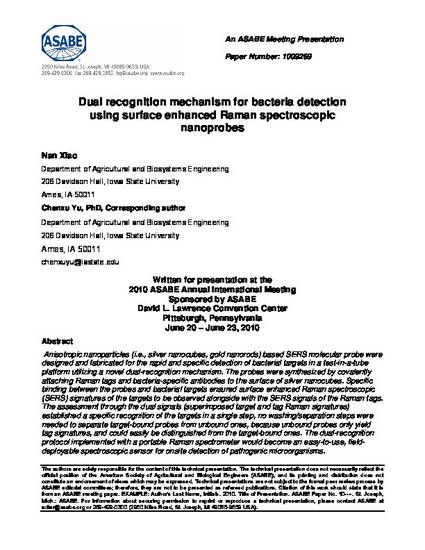
Anisotropic nanoparticles (i.e., silver nanocubes, gold nanorods) based SERS molecular probe were designed and fabricated for the rapid and specific detection of bacterial targets in a test-in-a-tube platform utilizing a novel dual-recognition mechanism. The probes were synthesized by covalently attaching Raman tags and bacteria-specific antibodies to the surface of silver nanocubes. Specific binding between the probes and bacterial targets ensured surface enhanced Raman spectroscopic (SERS) signatures of the targets to be observed alongside with the SERS signals of the Raman tags. The assessment through the dual signals (superimposed target and tag Raman signatures) established a specific recognition of the targets in a single step, no washing/separation steps were needed to separate target-bound probes from unbound ones, because unbound probes only yield tag signatures, and could easily be distinguished from the target-bound ones. The dual-recognition protocol implemented with a portable Raman spectrometer would become an easy-to-use, field-deployable spectroscopic sensor for onsite detection of pathogenic microorganisms.
Available at: http://works.bepress.com/chenxu_yu/8/
